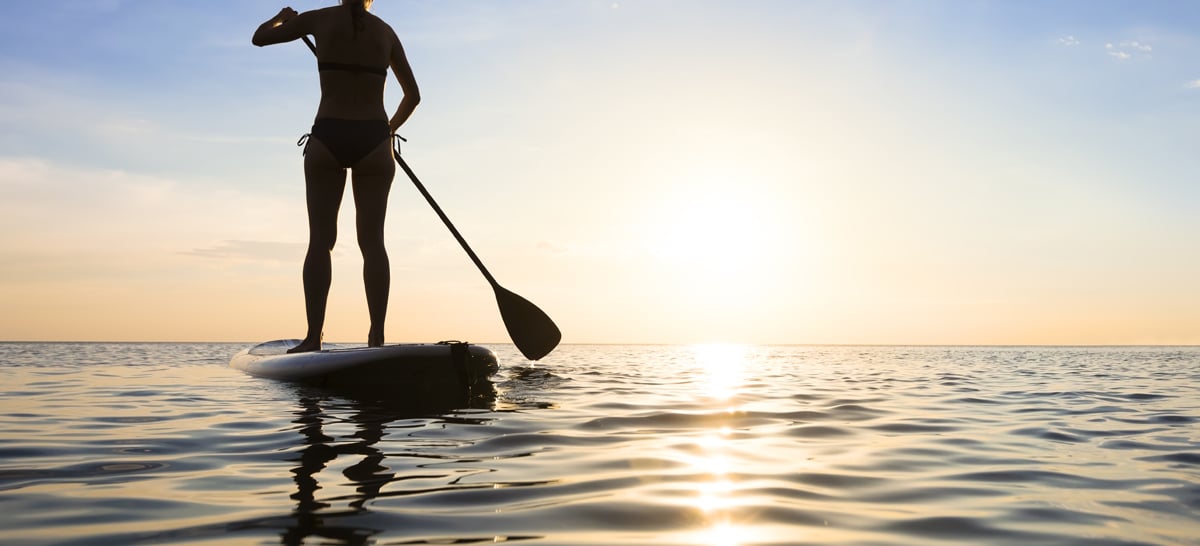There's a little-known fact about outdoorsy people, and I think you'll be surprised to hear it: We're not all hardcore adventurists. Not all of us head out every weekend to rough it in the wilderness, and a lot of us couldn't climb a boulder, take on a class-5 rapid or make it through a chunk of the Pacific Crest Trail if we wanted to (most of the time we don't even want to).
So take my word for it: kayaking is not just for the hardcore wilderness junkies. Sure, you can take a kayak into uncharted waters or heavy rapids and ride that river like a bronco... or you can take it easy, learn how to kayak and come out looking (and feeling!) like a true pro.
Enter: Me.
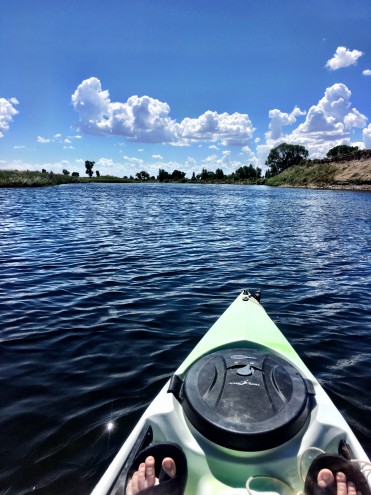
How to Kayak: Let's talk kayak basics.
I bought my first kayak a few years ago on a whim. I knew exactly one thing about kayaks: You can choose between a traditional sit-inside kayak and a recreational sit-on-top kayak. Because I yearn for the sweet golden tan of summer on my legs, I opted for the sit-on-top. Also, I knew that should I tip over, I could easily bail from the kayak and not get trapped in it upside down. I think this is a fear a lot of first-timers have. (Psst... it's really hard to tip your kayak. Stop worrying.)
1. How to Choose a Kayak: Pick your vessel!
Your future kayaking plans will determine if you get a sit-on-top kayak or a sit-inside kayak. Do you want to paddle around lakes and mellow streams all summer long? Sit-on-top is your gal. Do you want to protect your legs as you navigate trickier streams, or just shield yourself in chillier weather? Go for the sit-inside.
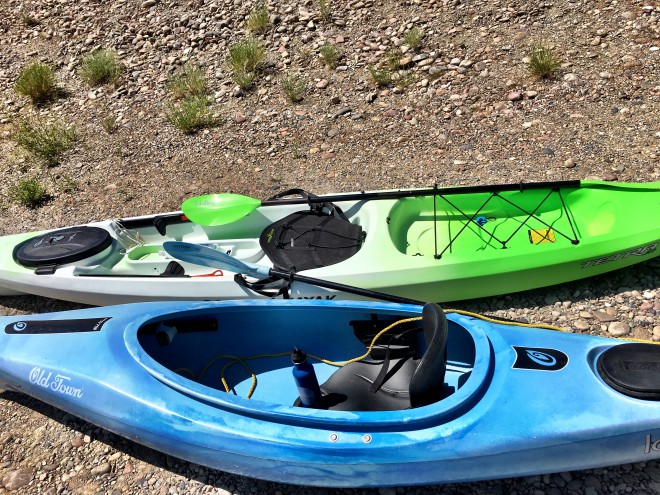
There are also different kayak silhouettes -- wider kayaks for recreational usage, and slimmer, sleeker kayaks for touring open water, oceans and waters with choppy conditions. If you're a newbie like me, go recreational. Once you get hooked and decide to plan a multi-day trip, you can upgrade to a touring kayak, which boasts more storage and slices through the water at higher speeds. In addition to touring kayaks, there are fishing kayaks and inflatable kayaks and a zillion variations on all of those. All you need to know right now: do you want to sit on top or do you want to sit inside?
2. Kayak Size, Length, Width: Do the math.
My mom is 5'1" and I can pick her up with one arm. She can get away with a short kayak. The rest of us? Not so much. Most kayaks will have "fits up to XX pounds" on their specifications, but if you can't find it, you can assume that the longer and wider a kayak is, the more weight it'll hold. Longer kayaks fit more stuff (hello, mini cooler!), but they're harder to turn. Shorter kayaks go faster and require less power to navigate your way through the water. My mom's sit-inside kayak is a manageable 10 feet long. My sit-on-top kayak is a 12-footer -- a little harder to turn, but like I said... it holds a cooler.
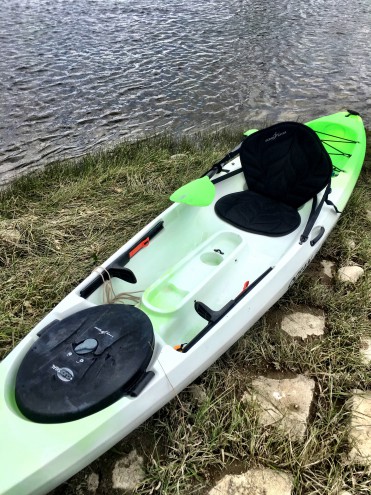 Sit-on-top kayak
Sit-on-top kayak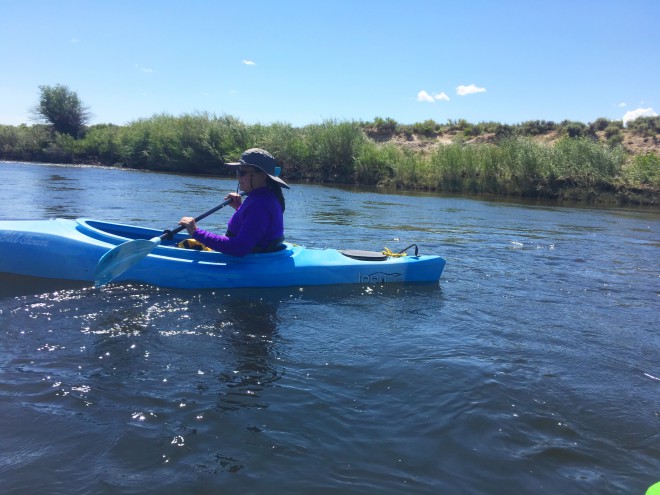 Sit-inside kayak
Sit-inside kayak3. Kayak Scupper Plugs: Buy them!
Silly name, but these day-saving little gadgets were a "just-in-case" purchase I made, and I am still praising the kayak gods that I thought to grab them. Scupper plugs are made for kayaks that come with self-bailing drain holes. The problem with self-bailing kayaks? When you're cruising down the river, the last thing you want in your boat is six quarter-sized holes to let water in. These little babies plug those holes up until you can stop, yank them out and let the water inside your kayak drain right out. They come in different sizes, so make sure you find out which size your kayak needs.
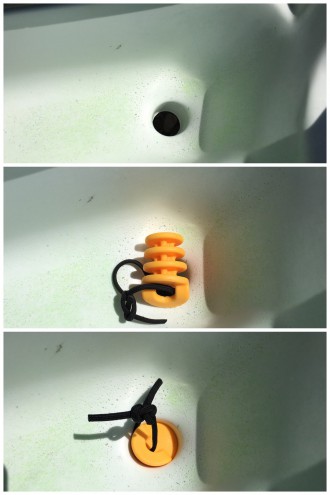
4. Kayak Paddles: The paddle is everything.
Well, not really. Technically, the kayak is the most-important thing you take with you when you go kayaking. But if you forget your paddle, you're officially up a creek... to stay. There are several lengths of paddles to choose from, and selection usually goes by your height, torso length and your kayak's width. The taller you are, the longer your paddle should be. The wider your kayak is (recreational kayaks are the widest), the longer your paddle should be. Most paddles are measured in centimeters. Short paddles vary from 190cm to 220cm. Longer paddles will go from 230-260 cm and beyond. In most cases -- and especially beginner cases -- opt for the longer paddle.
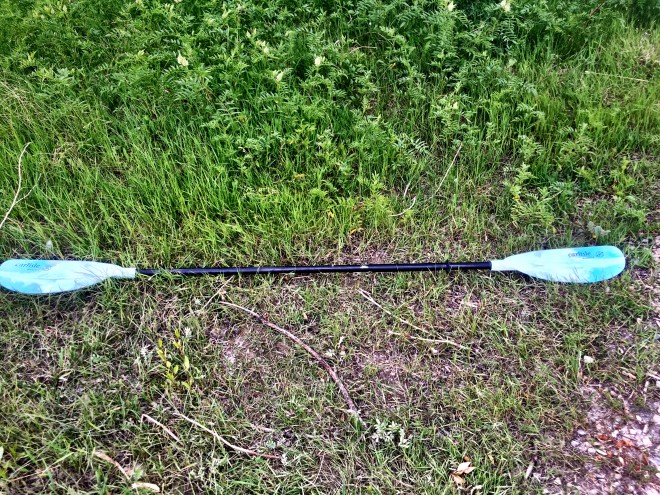
Bonus tip: Most paddles come in two pieces that snap into each other. This handy feature isn't just for making them easier to transport (but dang if that doesn't come in handy). You can easily adjust the paddle to have one blade horizontal and one blade vertical. Try it out and see if you prefer to paddle this way -- most recreational paddlers prefer both blades horizontal.
5. Don't Overthink It. But don't go in blind, either.
There's a fine line between "I can do anything!" and "I am totally unprepared!" Don't be the latter. Do a little research on the body of water you plan to kayak, take your measurements and ask for advice when you buy a kayak and a paddle.
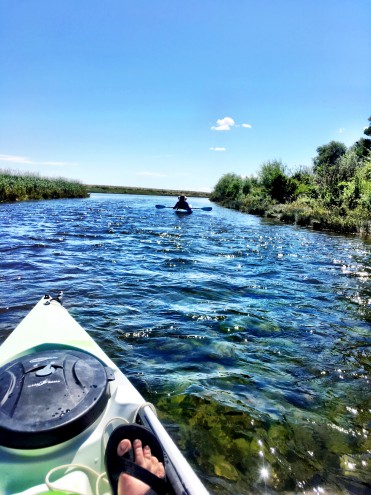
Now you're ready (ish) to get your buns in a boat and go explore the watery world around you.

